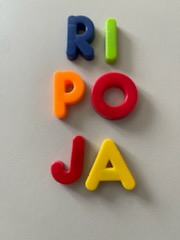Training in understanding syllables
Description
- Children may have some difficulties in understanding syllables.
- They may not be able to divide words into smaller units.
Syllables are useful for correct reading and spelling of words.
Material
Any concrete objects the teacher can find in the immediate environment to represent syllables.

Syllables
Pronounce different words using syllables so that the child learns that words can be divided into syllables.
Example: The teacher says the word paper in syllables: PA-PER.; and then asks the child to repeat the word that he or she had heard.
Divide words into syllables by clapping the hands together with the children.
Example: E-LE-PHANT Clap 3 times as you pronounce each syllable.
Ask the child to count syllables in a word using fingers and then use concrete objects to make the syllables more “visible”. This activity should follow the direction of reading. (From left to
right).
Example: HO-LI-DAY: Three objects – each is representing one syllable.
Present different syllables and ask the child to form words from the syllables.
Example: TO and DAY. Ask the child to make a word from these two syllables.
Syllable deletion tasks for local languages. The teacher can say a word and then he or she removes one of the syllables; it can be at the beginning or at the end. Ask the child what syllables remain. Example: Say KULIMA – KU-LI-MA. Ask the child 1) to remove KU and 2) say what the remaining syllables are. “LI-MA” remains.